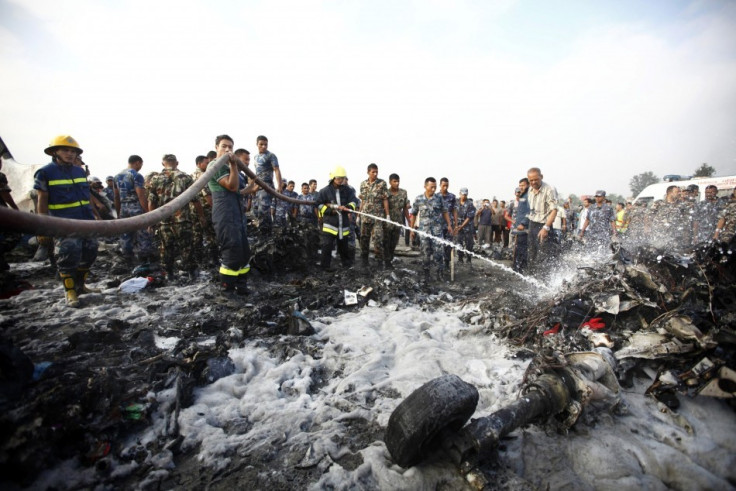Nepal Plane Crash: Kathmandu Villagers Hail Hero Pilot

Villagers living near the site of the recent plane crash in Kathmandu, Nepal have thanked the pilot for avoiding residential areas and further loss of life.
The aircraft crashed on 28 September shortly after taking off from Kathmandu. All 19 passengers on board were killed and seven of the victims were British.
Mughadhan Rai, one of the people living in a village near the crash site, said none of the people on board could call for help as they had been displaced to the front of the cabin when the plane went down. Other witnesses said they did not hear or see people inside the plane asking for help.
Rai said: "I saw the airplane hovering in the air and then dived onto the ground. At the beginning there was smoke coming out from the front of the plane. Then the plane was on fire and burnt out very fast just like a piece of burning paper."
Witnesses say no one from the village, which has a population of 5,000, was hurt. It appears the pilot directed the aircraft away from the settlement.
By the time emergency services arrived at the crash site 25 minutes after impact, the plane had burnt out. Rescuers could not arrive at the scene any faster because of the uneven terrain surrounding the area.
The Air Accidents Investigation Branch has announced it will be assisting in the crash investigation. A company statement said: "The AAIB is sending two investigators to assist the Nepal investigation into the recent accident near Kathmandu airport."
Suresh Acharya, a senior official in the aviation ministry, said the crash may have occurred because the pilot became panicked after hitting a bird. He said: "The preliminary finding of the Civil Aviation Authority notices unusual manoeuvring during the take-off and the pilot communicated to air traffic control the aircraft was hit by a bird.
"But a plane crash does not occur simply just because its engine was hit by a bird. The pilot may have been panic-stricken and made a steep narrow turn instead of forming a wider radius required to bring the malfunctioning aircraft back to the runway."
© Copyright IBTimes 2025. All rights reserved.






















